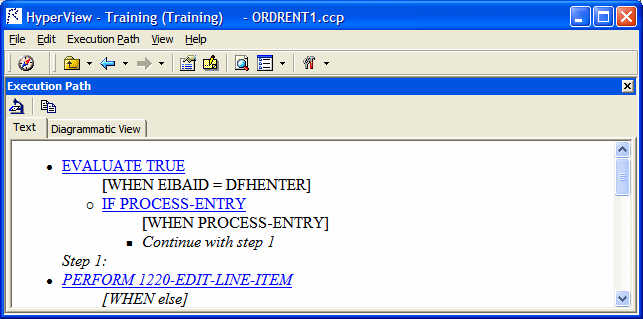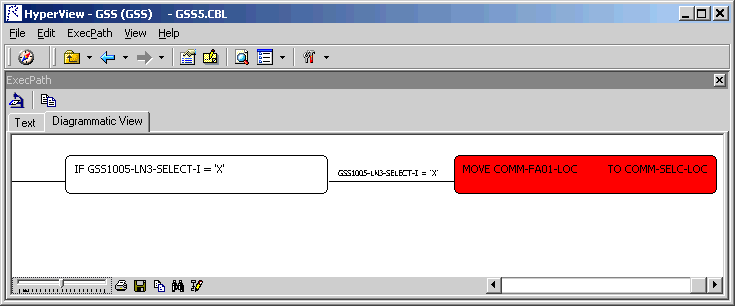Using the Execution Path Pane
The Execution Path pane displays a hierarchical view and diagram of the conditions that determine the control flow in a program. Each view traces the control flow from the first involved condition to the seed construct selected in the Source or Context pane. The seed construct can be either a paragraph or statement. Use an execution path to ensure that a code segment encapsulates all of the business logic for a candidate business rule.
Note: For a COBOL program, the Execution Path tool may give incorrect results if the program contains a paragraph that is used in
multiple PERFORM statements or in some combination of PERFORM and GO TO statements.
- Select the seed construct in the Source or Context pane.
-
Choose
Execution Path > Analyze Selected Construct.
Interactive Analysis displays the execution path for the seed construct
Tip: Click the
 button on the tool bar to copy the execution path to the clipboard with all formatting preserved.
button on the tool bar to copy the execution path to the clipboard with all formatting preserved.

-
Click the Diagrammatic View tab to display the execution path in a diagram. The seed construct is displayed in red. The tool
bar displays icons used in the common diagrammer. For more information, see
Analyzing Projects in the product documentation set.
